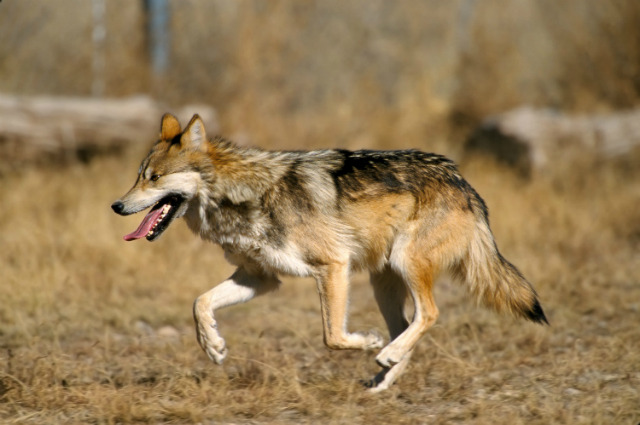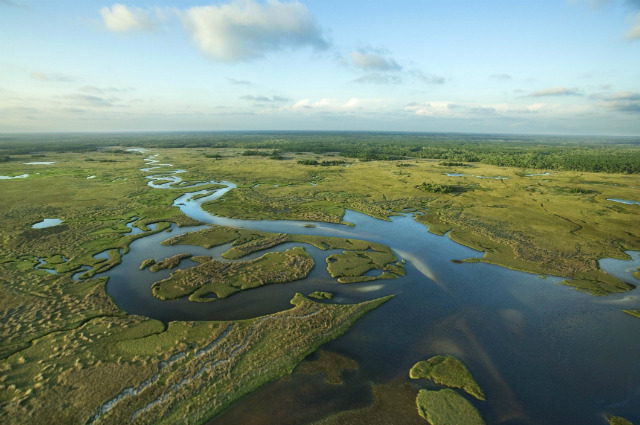Wildest Places In The Lower 48
The "River of No Return" in this pristine wilderness in central Idaho refers to the Salmon River, a famous whitewater rafting destination known for its powerful current. The name is just as well, given the truly rugged nature of this 2.3-million acre wilderness, the second largest in the lower 48 after Death Valley. Apart from a few airstrips, there are only a handful of service roads and 1.5 million acres without any trails at all. The Salmon River cuts a gorge deeper than the Grand Canyon in places, and the mountains are steep and nearly impassable, making them the perfect habitat for threatened species like gray wolves, mountain lions and wolverines. And if you want more solitude, "The Frank" is contiguous with another million acres of roadless Forest Service land, and separated from the 1.3-million acre Selway-Bitterroot Wilderness by a single dirt road.
Susquehannock State Forest, Pennsylvania
This protected forest on the rolling hills of the Allegheny Plateau in central Pennsylvania is among the most remote places east of the Mississippi. And how remote would that be, exactly? In Cherry Springs State Park, inside the state forest, there is so little light pollution that the Milky Way actually casts a shadow, which is why it was designated as the second International Dark Sky Park by the International Dark-Sky Association. Susquehannock State Forest also contains Pennsylvania's most remote place, Hammersley Wild Area.
Gila National Forest, N.M.
This national forest has more official wilderness than any other protected forest in the Southwest, according to the U.S. Forest Service. In fact, the 558,000-acre Gila Wilderness was the first designated wilderness area in the world, when it was set aside in 1924. Now adjoining the Blue Range Wilderness and the Aldo Leopold Wilderness, this wild area is described by the USFS as "varying from grassland foothills upward through juniper woodland, ponderosa pine, and then spruce-fir forests on the high peaks." Human impact here is so minimal that it's able to support of a small population of Mexican gray wolves, a critically endangered species.
Okefenokee Swamp, Georgia & Florida
A vast blackwater bog straddling the Georgia-Florida line, the Okefenokee Swamp is a 38-mile by 25-mile spread of prairie grass, bald cypress, islands, lakes and scrub only a short drive from Jacksonville, Fla.—but far from civilization. Nearly 354,000 acres on the Georgia side are officially designated as federal wilderness, and they're best accessed via canoe or kayak. Watch out for bears, gators and water moccasins.
Bob Marshall Wilderness, Montana
Even in vast, wild Montana, the Bob Marshall Wilderness is vast and wild. Following the Continental Divide for 60 miles, "The Bob" has one million acres of rocky ridges, alpine meadows and dense forest populated by major North American megafauna, including wolves and grizzlies. Adding to its forbidding nature is a 22-mile, 1,000-foot-high escarpment called the Chinese Wall.
Maine North Woods
Most of Maine's population is clustered along its coast and eastern border, leaving a huge swath of New England forest—about 3.5 million acres—with few inhabitants and lots of wilderness, including the Allagash Wilderness Waterway and Maine's highest peak, Mount Katahdin, the northern terminus of the Appalachian Trail. Although much of the area is crossed with logging roads, the jewel is Baxter State Park, a completely pristine, "forever wild" area of 200,000 acres donated by former governor Percival P. Baxter. In recent years there have been unsuccessful efforts to recognize upwards of 3.2 million acres of the North Woods as a national park.
Teton Wilderness, Wyoming
Part of one of the largest contiguous wild areas in the United States, Teton Wilderness bridges the area between Grand Teton National Park and the especially remote southeast corner of Yellowstone, and is bordered by two other federal wilderness areas within Bridger-Teton National Forest. In fact, the place often cited as the most remote in the lower 48 is said to be here, near the confluence of the Yellowstone and Thorofare Rivers.
Olympic Wilderness, Washington
This wilderness area comprises nearly all—95 percent—of Olympic National Park. Almost the entire Olympic Peninsula is off limits to roads, preserving 876,000 acres of temperate rainforest, glacial peaks and rugged coast.
Everglades, Florida
It should come as no surprise that Florida's "river of grass" is not amenable to building roads or permanent settlements. Nearly 1.3-million acres are protected as the Marjory Stoneman Douglas Wilderness, and around one-third of that is underwater in Florida Bay and surrounding the coastal mangrove stands of the Ten Thousand Islands. This vast expanse of sawgrass and swamp is the largest wilderness area east of the Rockies, according to the NPS.
Jarbidge Wilderness, Nevada
Located on the northern edge of Nevada's Great Basin, the 113,000 acres of Jarbidge Wilderness are one of the most remote areas in one of the most remote regions of the country. (The town of Jarbidge, near the wilderness area's northwest border, is said to be the most remote town in Nevada, with no paved access.) The wilderness contains the crest of the Jarbidge Mountains, with peaks over 10,000 feet and a landscape closer to that of the Alps than to typical Great Basin scrub. Jarbidge Wilderness is also known for having some of the cleanest air in the country.


